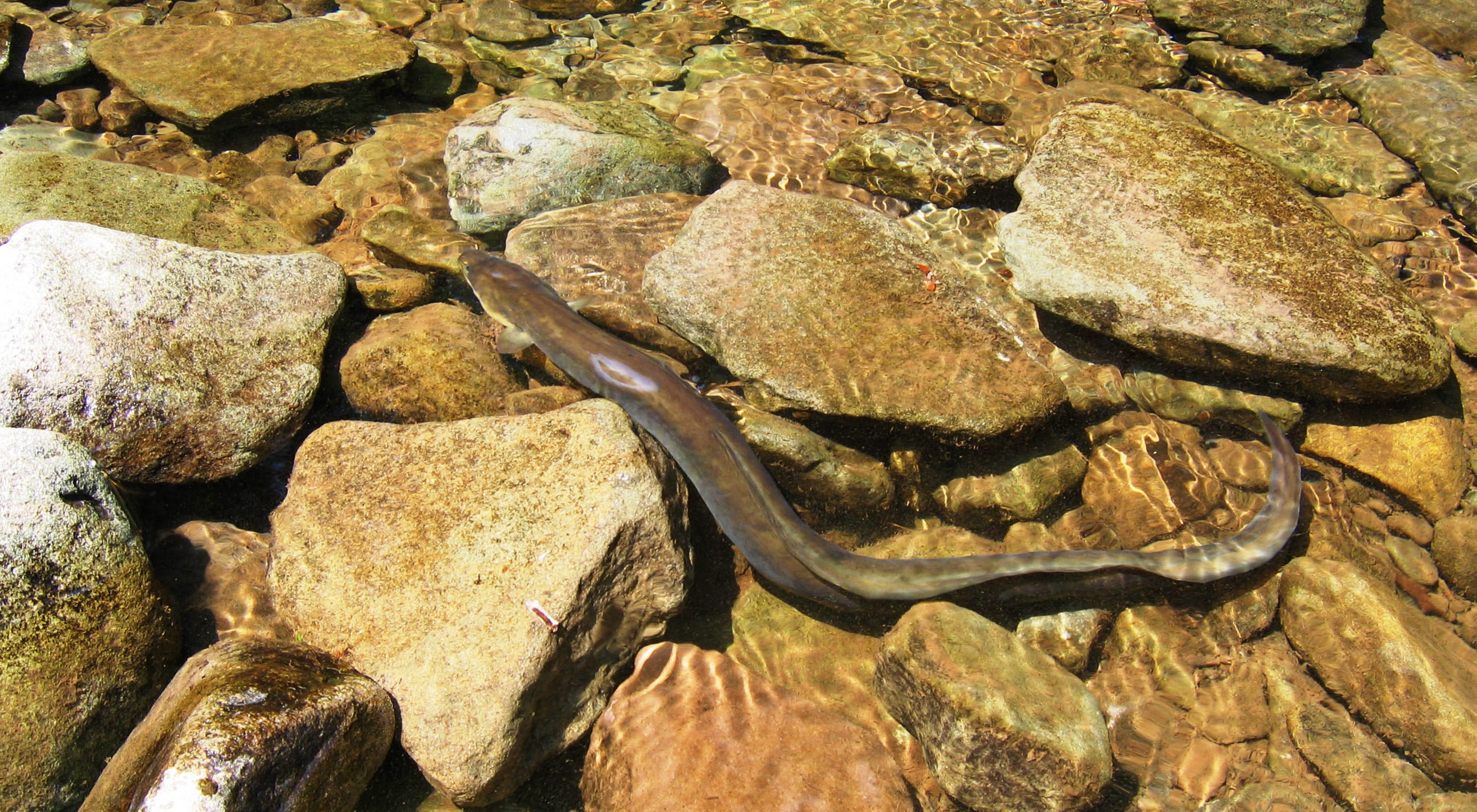American Eel Conservation
Protecting the Delaware River benefits a unique and globally endangered species.
In 1900, American eels were prolific throughout the Susquehanna and Delaware rivers. Now they are listed as endangered on the International Union for Conservation of Nature’s (IUCN) Red List of Threatened Species. Their decline is likely due to a variety of threats spanning diverse geographies, habitats and the fresh, saltwater and brackish waters that fuel their epic life journey.
American Eel Life Cycle
Eels mate in the North Atlantic’s Sargasso Sea, and their leaf-shaped larvae hatch there before drifting into coastal waters. They transform into a stage known as a glass eel, and then into an elver, which travels for hundreds of miles upriver into freshwater lakes and streams, eventually transforming again into an adult eel. When they are ready to spawn, eels travel back downstream and make their way back to the Sargasso sea to mate.
Quote: Mari-Beth DeLucia
Ten years ago, no one knew much about where the eels were. Now we have important data—for both the Delaware and Susquehanna rivers—that are key to understanding and affecting conservation of this unique species.
A Twisted Tale of Dams, Eels and Mussel Reproduction
Eels are mysterious—in how they look and what they do. We do know that large dams prevent eels from migrating upstream where they spend most of their life. However, eels thrive along the 330-mile-long Delaware, the longest undammed river east of the Mississippi.
Water in the Delaware is also very clean, partly because of an abundance of mussels, including Eastern elliptio mussels—an estimated 280 million of them—that filter the river six times before its waters reach the Delaware Bay. In return for clean, free-flowing waters, American eels and other fish help the mussels reproduce. The mussels wave appendages thatresemble a worm or small fish, to attract an eel before dispersing a cloud of larvae that attaches to and travels with the eel farther up (or down) stream.
_Ryan_Kennedy_4000x2200.jpg?crop=533%2C0%2C2933%2C2200&wid=640&hei=480&scl=4.583333333333333)
Documenting American Eel Populations
The Nature Conservancy has assessed and documented eel populations and their distribution in the headwaters of the Delaware River in Pennsylvania, New Jersey and New York. This data recently informed efforts by TNC and partners to advocate for policies that protect the Delaware River and other marine, estuarine and freshwater habitats that play a key role in the life cycle and survival of American eels.
Stand Up For Nature
Support our work to protect nature in Pennsylvania.



